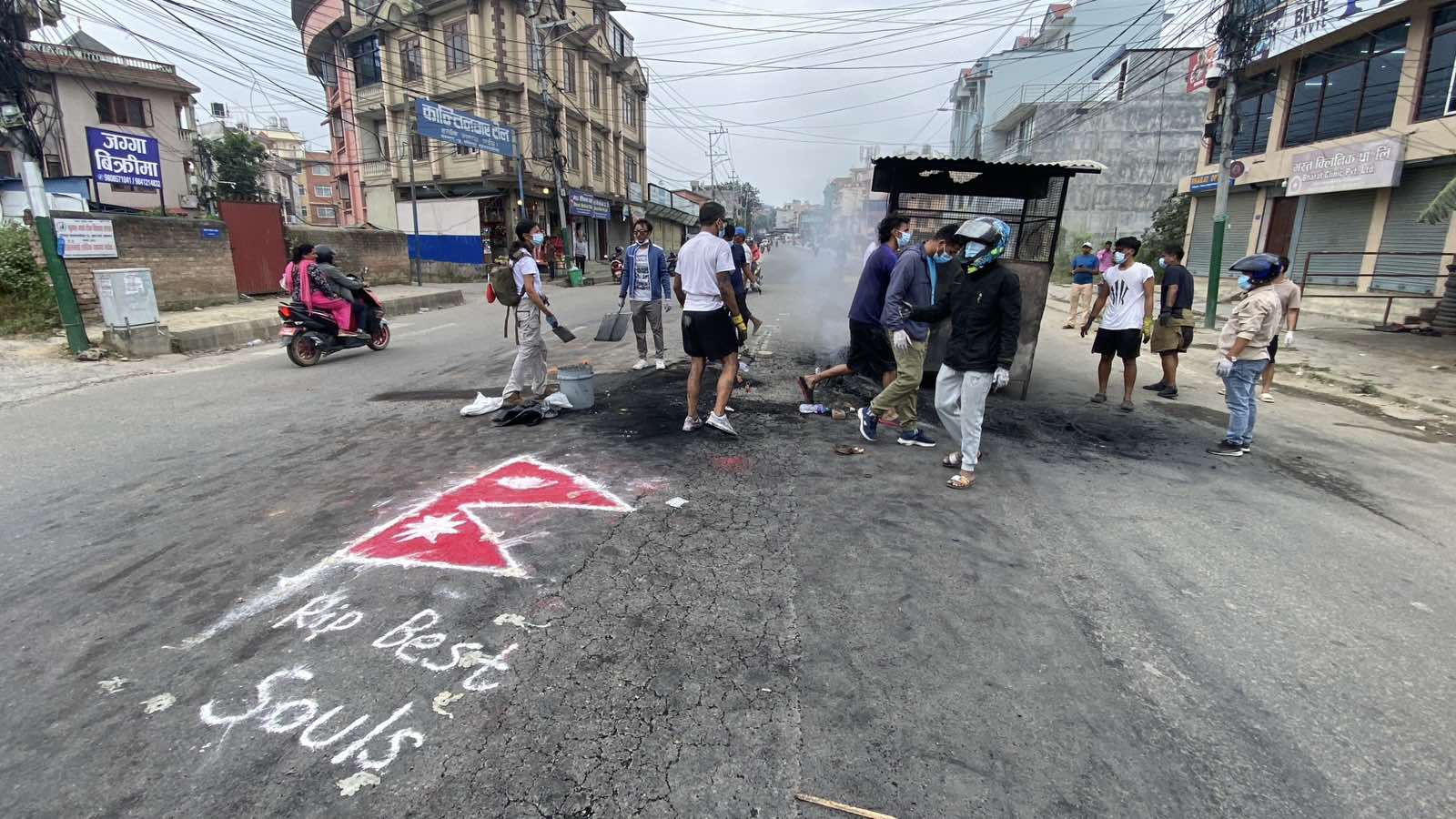Parliament in flames, leaders stepping down in waves, and streets filled with restless citizens. Nepal stands at one of the most fragile moments of its democratic journey. What began as outrage over a social media ban quickly spread into a nationwide movement against corruption and political failure. The anger among the public is genuine, but the way it has been expressed through violence and destruction reveals a dangerous collapse of order. Beneath it all lies a deeper truth. The protest is the result of political actors swapping manifestos for ministries, identities for alliance, democracy to trade market, state welfare to welfare of their own. Such irresponsibility by national parties have betrayed its voters and democracy itself.
In democratic systems, political ideologies act as guiding principles that shape a party’s vision, values, and policies, allowing voters to choose not just leaders but the ideas they represent-whether leftist, rightist, or centrist. In Nepal, however, these isms are steadily eroding as parties form cross-ideological coalitions and prioritize personality-driven politics over principles. Ideology is more than a label; it is an identity that organizes public opinion, defines policy priorities, and represents a contract between citizens and political actors. A leftist party, for instance, is expected to champion equality, state intervention, and workers’ rights, while a rightist party upholds tradition and institutions. Yet Nepali parties frequently abandon these commitments for short-term self-interest, undermining both their identity and the public’s trust in democratic politics.
The Case of CPN-UML
There has been growing doubt about the CPN-UML's dedication to leftist principles. Even though the party still uses leftist slogans and symbols, its policies frequently reflect neoliberalism and the consolidation of power rather than Marxist-Leninist principles. The party's internal democracy was particularly weak under the leadership of KP Sharma Oli, who was prime minister until his resignation on September 9, 2025. Oli was a prime example of this concentration of power when he decided to remove age and term limits for party leadership, allowing for more personal control. Furthermore, the party's leadership failed to prioritize labor and social reform, two issues that leftist parties typically prioritize.
Public dissatisfaction culminated in mass demonstrations calling for increased accountability and anti-corruption reforms, especially among Gen Z activists. Following a government-imposed social media ban that was later lifted after violent clashes claimed several lives, these protests grew more intense. When protesters stormed the parliament building, the unrest peaked, forcing Oli to resign and the parliament to dissolve.
‘Risk of land erosion by swelling Saptakoshi rising, efforts be...

The Maoist Centre and Nepali Congress
The Maoist Centre led a decade-long armed insurgency with the goal of dismantling the parliamentary system, abolishing monarchy, and establishing a “People’s Republic.” Its ideology was rooted in anti-feudalism, anti-capitalism, and class war. However, after joining mainstream politics post-2006, it gradually shifted to power politics. For example, in 2017, the Maoists joined hands with the UML, a party with different leftist roots, to form a supposedly “unified” communist front. The unification fell apart quickly, exposing the alliance as strategic, not ideological.
Nepali Congress is known as the foundational party of Nepal’s democratic journey. Its historic commitment to democratic socialism and pluralism is commendable. Despite its historical values, Nepali Congress has shown worrying signs of erosion of ism. The party’s 14th general convention in 2021 lacked ideological discussion, focusing instead on leadership positions. There is also emergent leadership centric culture and weak inner democracy. The largest party has betrayed the largest public trust by forming alliances without ideological harmony.
The Rise of Rastriya Swatantra Party (RSP)
The RSP, Nepal’s fourth-largest parliamentary party, gained 20 seats within six months of its establishment, positioning itself as an issue-based and technocratic party. Yet its dependence on leader Rabi Lamichhane, amid legal and citizenship controversies, highlights its lack of ideological depth. Despite initial commitments to limit political positions, RSP quickly joined the cabinet, accepted power-sharing roles, and allied with parties across ideological divides, including UML, Maoist Centre, and Nepali Congress, indicating actions clearly beyond its manifesto.
Coalitions and Ideological Erosion
The most telling examples of ideological erosion lie in Nepal’s frequent and unstable coalition government. In 2017, UML and Maoists formed a left alliance promising stability and socialist policies. It collapsed within three years. In 2021, the Maoist Centre ditched UML and joined hands with its ideological rival Nepali Congress. Currently, the same parties (UML and Nepali Congress) known for long standing rivalry, once accused each other of corruption and betrayal, are sharing power once again. The alliances are not based on shared policy goals or people’s welfare. This is only possible because the hunger of power has overtaken ideological discipline.
The Preamble of The Constitution of Nepal states that people are sovereign of Nepal. By means of election, people (voters) give their sovereign power to their representatives who are political actors. When parties abandon their ideologies and promises, the biggest losers are the citizens. Voters elect parties based on manifestos. But post-election coalitions often look like backroom deals.
This erosion of ideology has consequences. When political parties lose their compass, citizens lose their trust. And when citizens no longer believe that parties represent them, they look for other ways to make their anger heard. The protests of September 2025 are not just about social media and corruption. They are the eruption of long frustration with leaders who abandoned their isms as well.
Conclusion
If Nepal is to emerge from this crisis stronger, its political parties must reclaim their ideological integrity, and citizens must demand clarity and accountability. The fall of leaders should not merely be a spectacle but a lesson: that democracy thrives only when principle guides action. Only by restoring faith in political values and recommitting to genuine ideological commitments can Nepal chart a path toward responsible governance, social justice, and lasting public trust.
The author is a law student currently studying at Kathmandu School of Law.




































